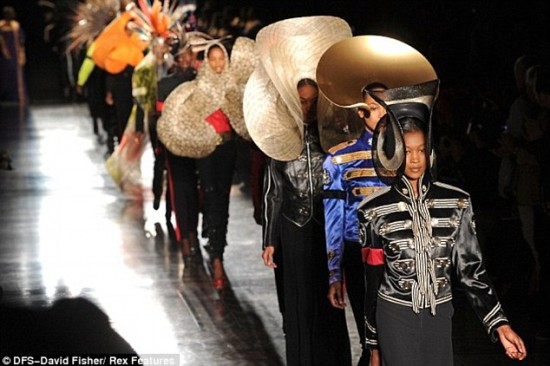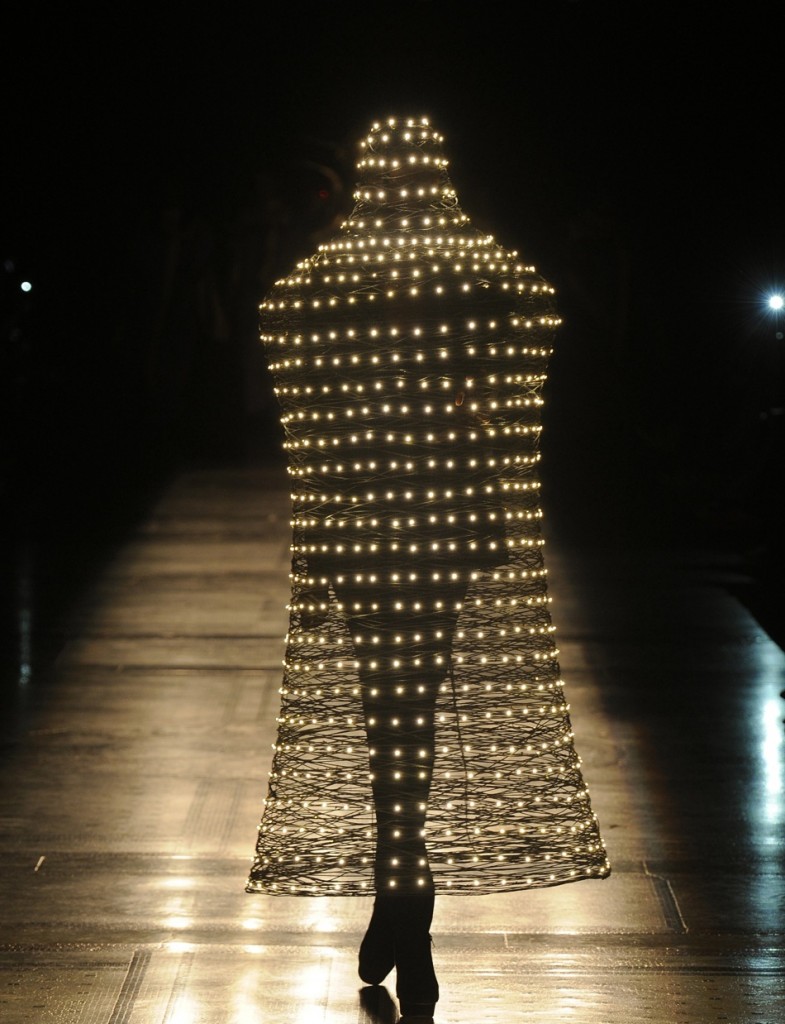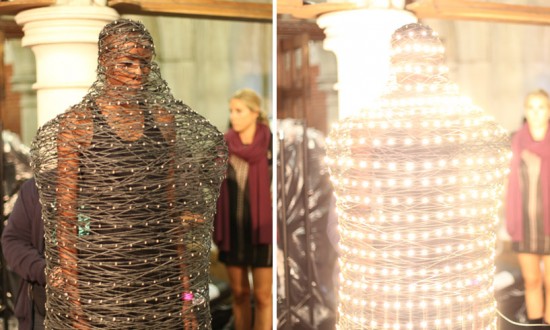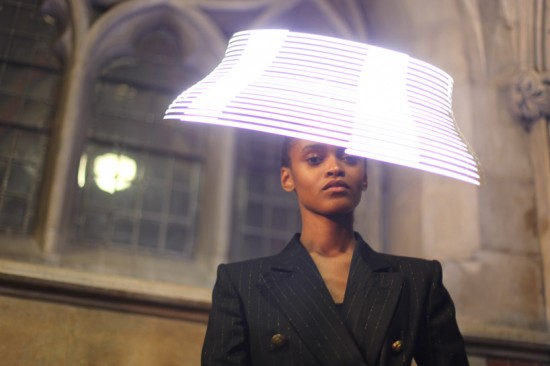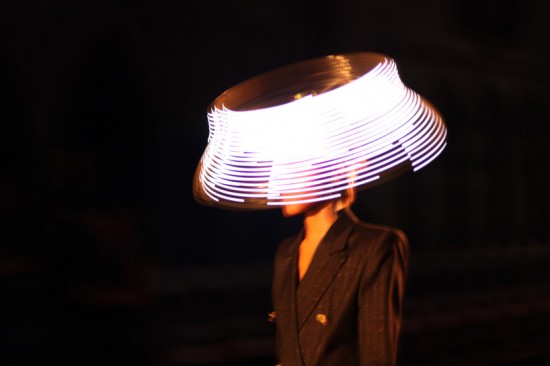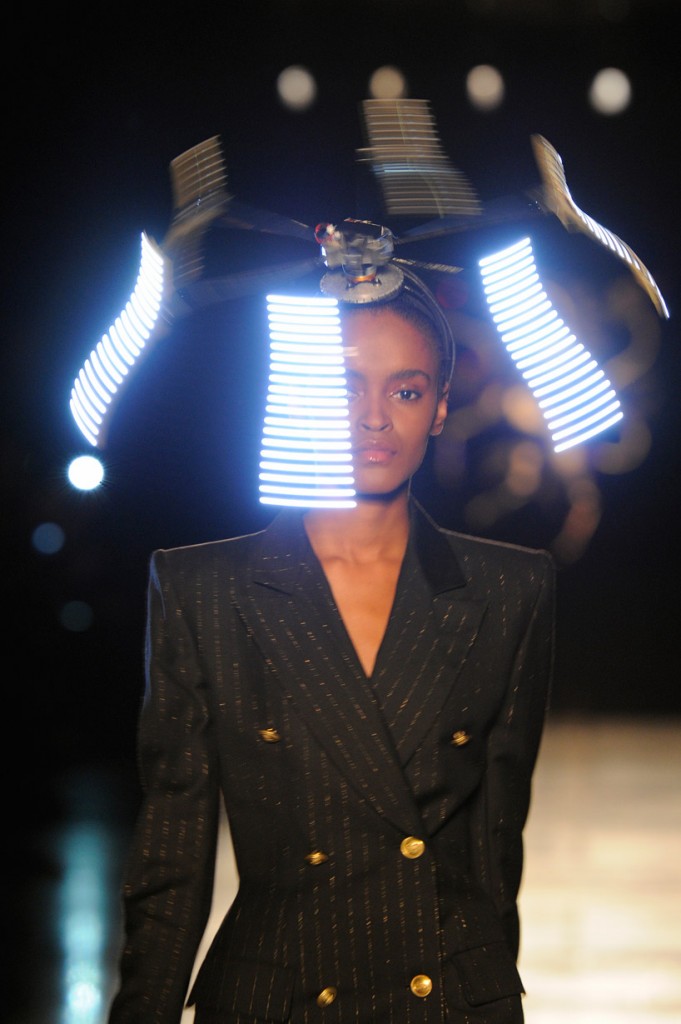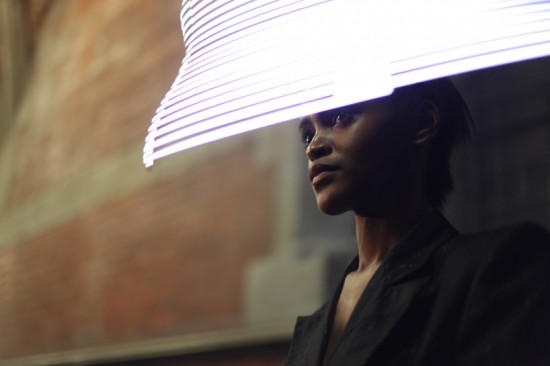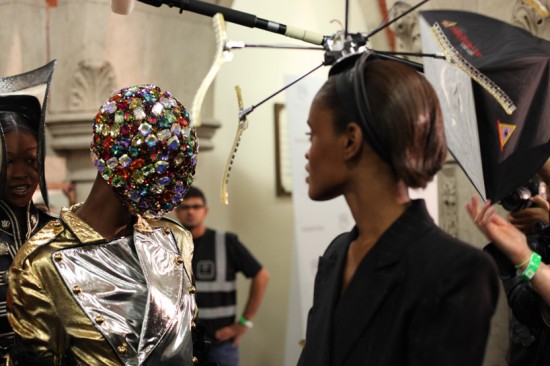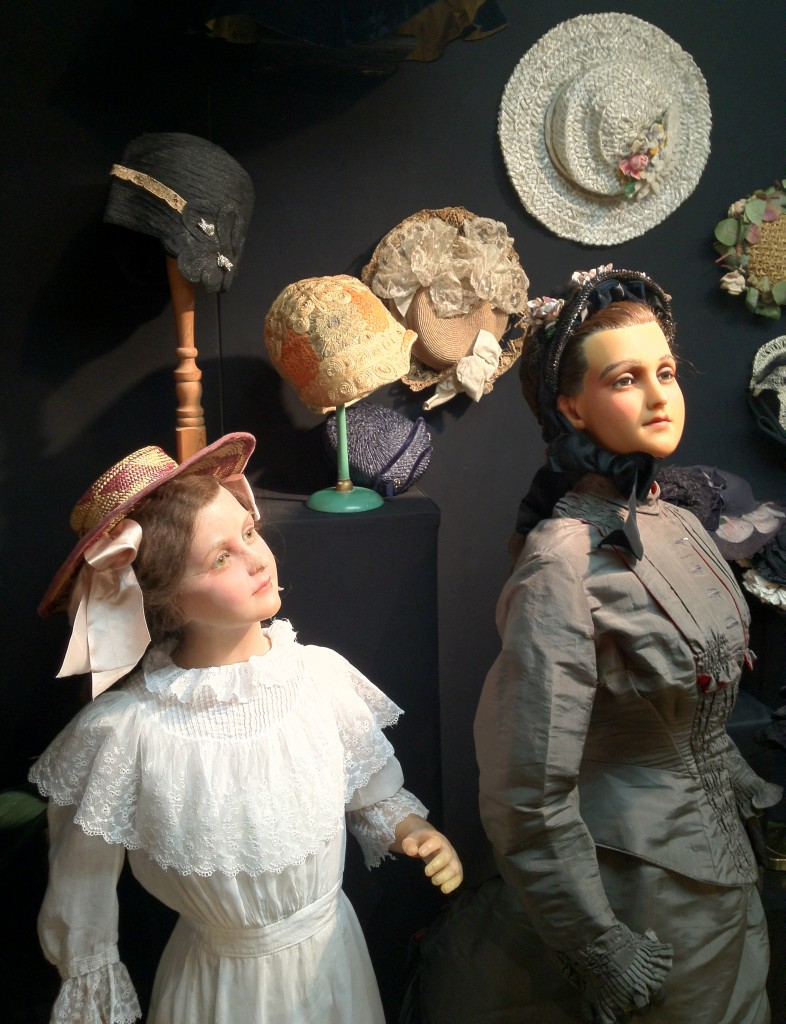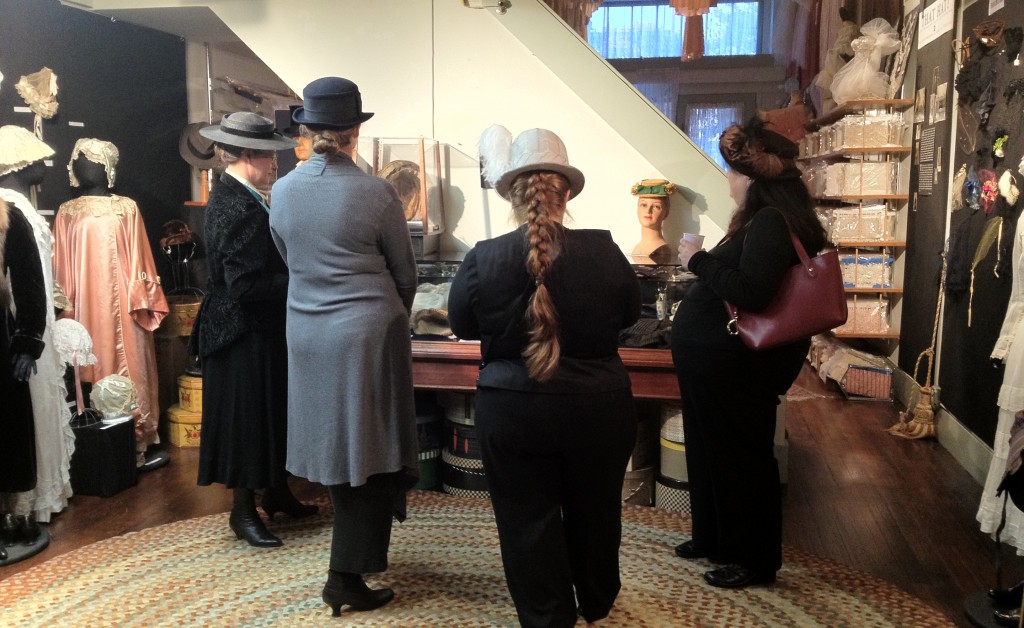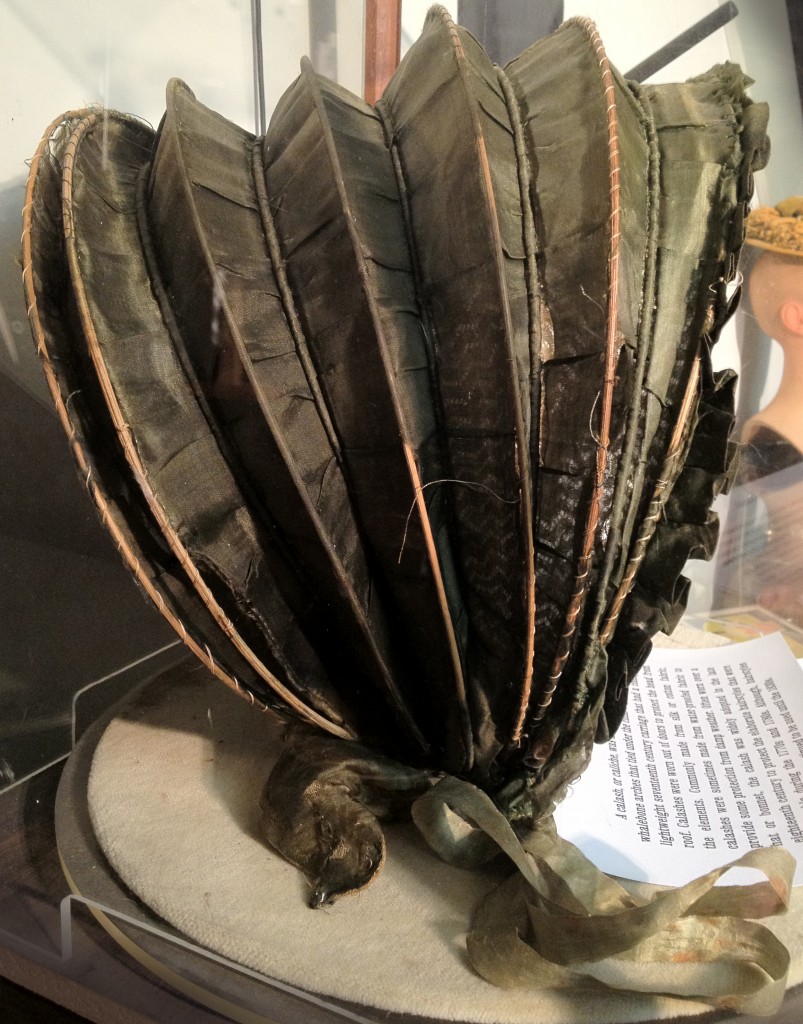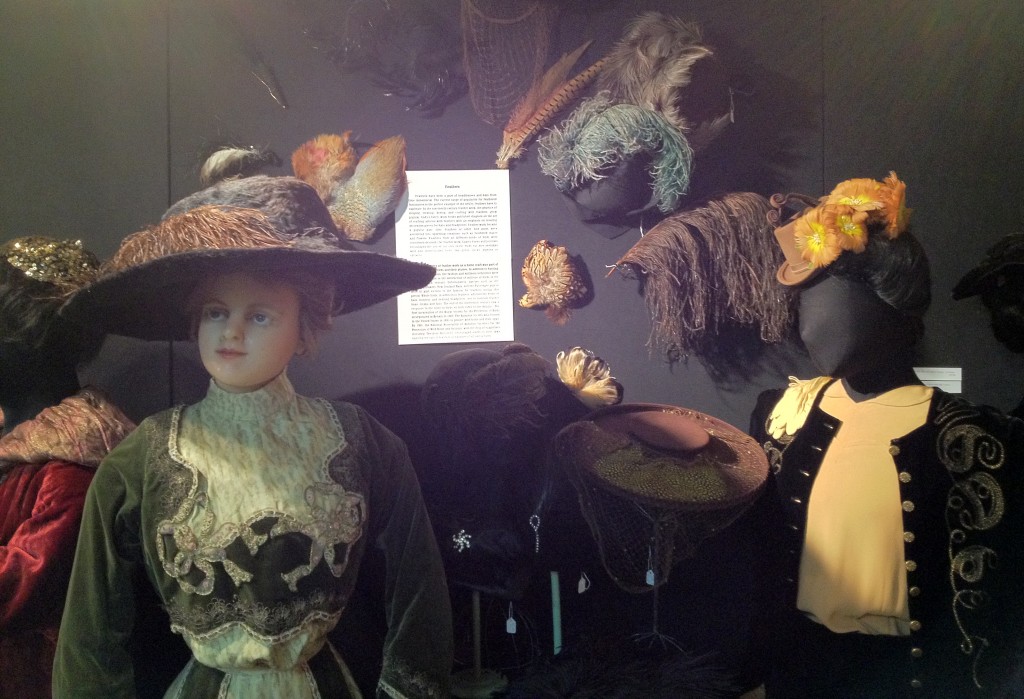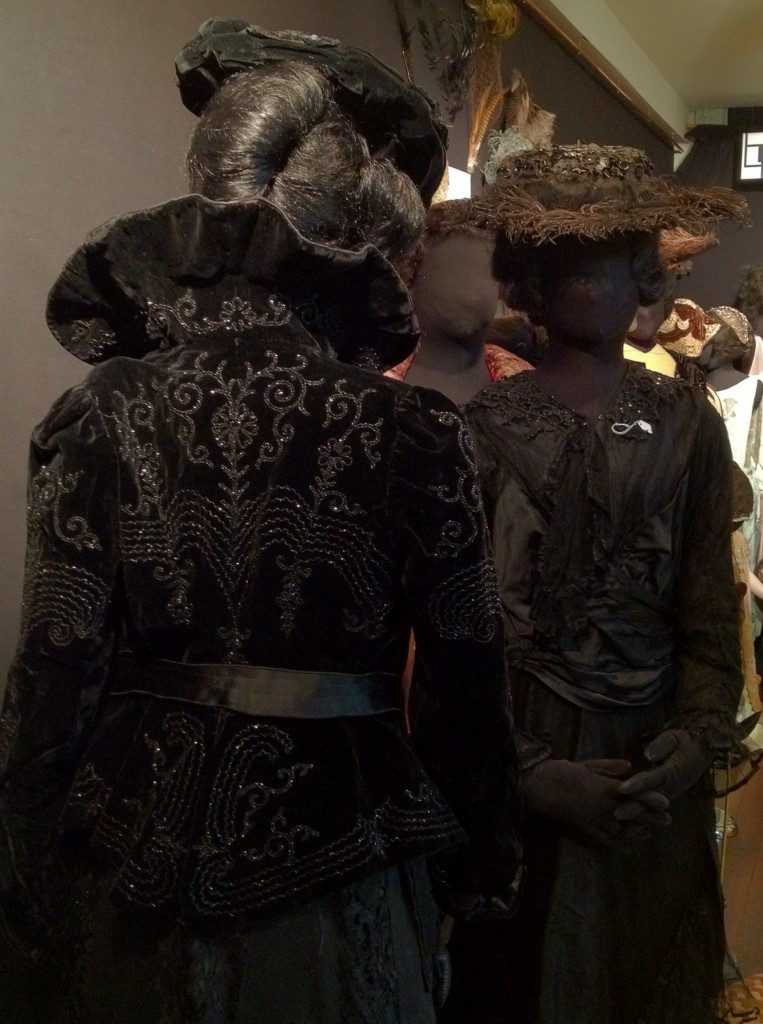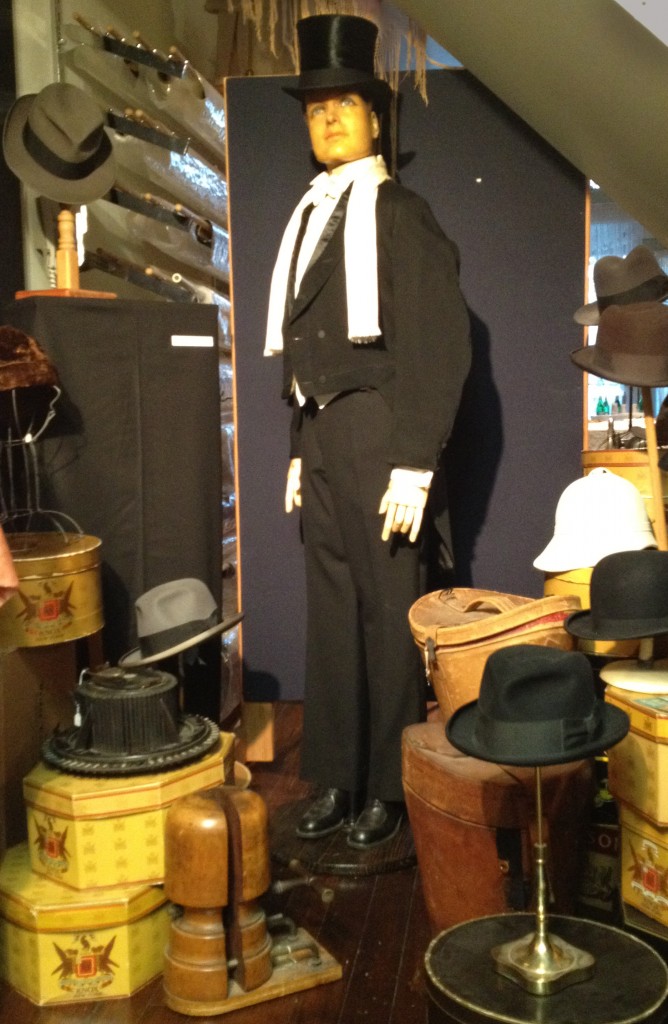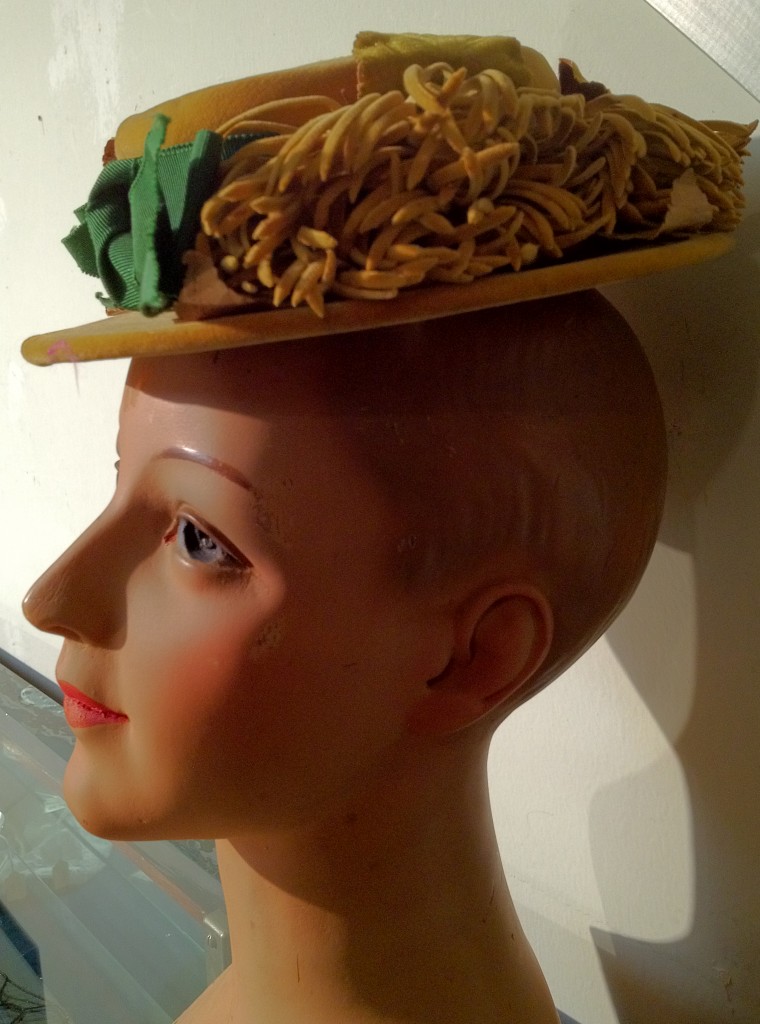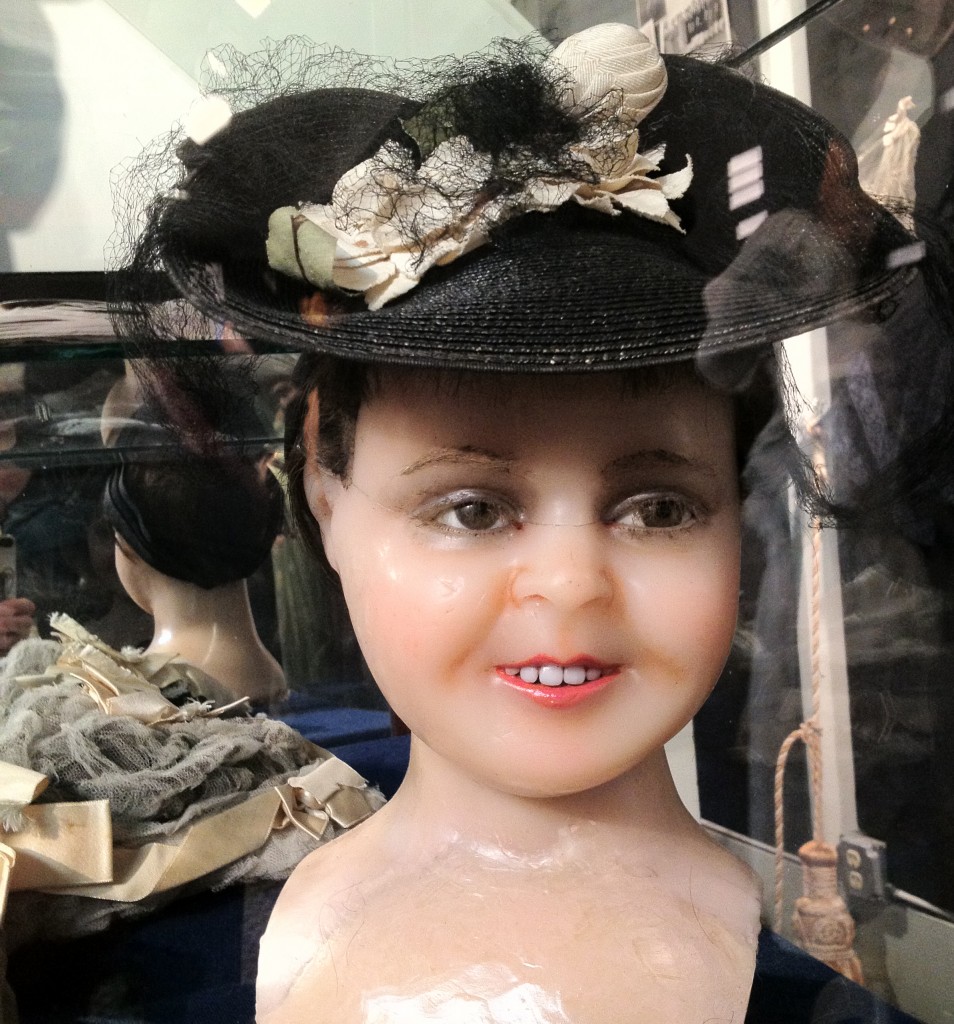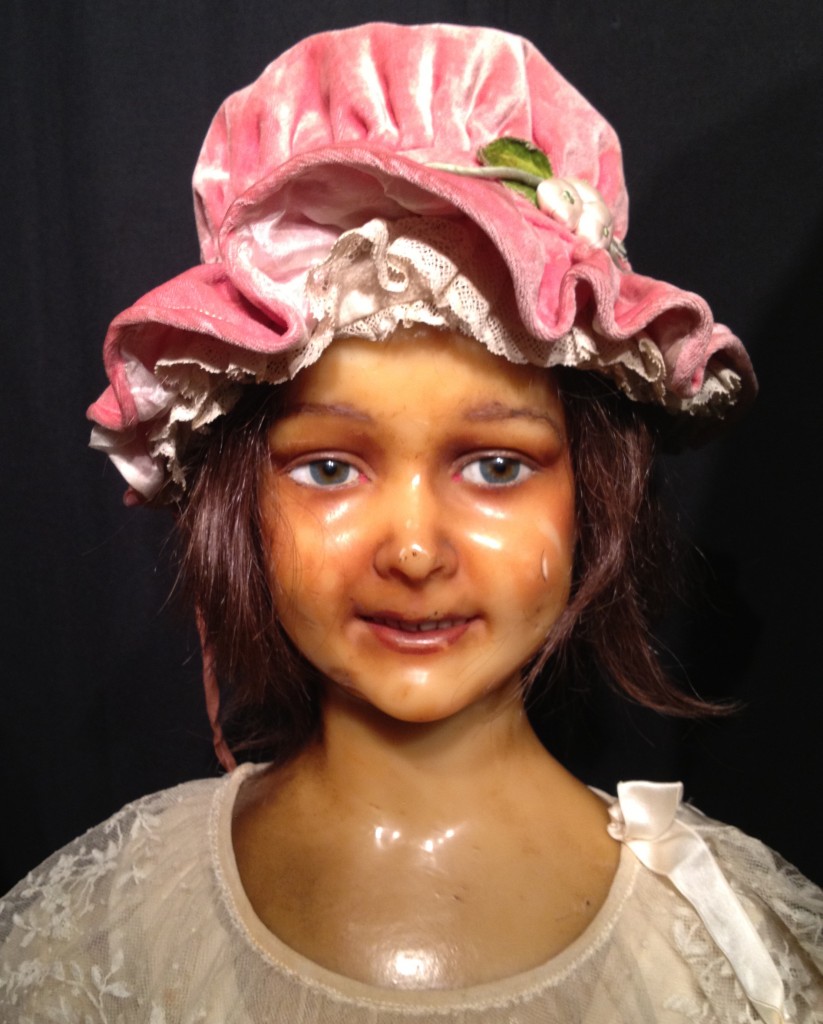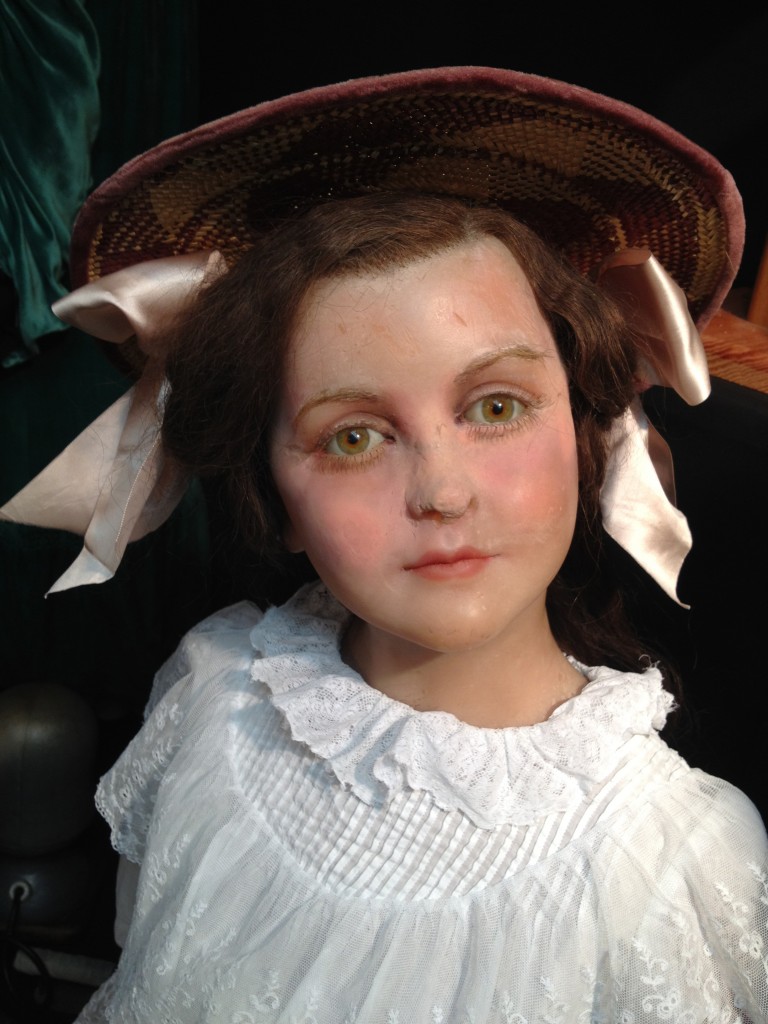There are many reasons to be jealous of Dita Von Teese. Perhaps my most coveted was her front row seat at last month’s Philip Treacy show at London Fashion Week.
The show marked the avant-garde milliner’s first show in London in twelve years. Beyond the phenomenon of Treacy’s incredible art-for-the-head, there were a whole lot of notable points about this show: that it was opened by Lada Gaga, declaring Treacy “the greatest milliner of all time”; that it showcased some of Michael Jackson’s most famous stage outfits (and music); and that in a time when they often have difficulty getting work, Treacy’s runway was cast exclusively with black models.
As if that weren’t enough to leave the audience wide-eyed and giddy, enter collaborator Moritz Waldemeyer, an East German technology/art/fashion designer now living in London. Waldemeyer created two hats for the show: one in partnership with Treacy, the second, of his own design.
Philip Treacy’s “Shroud hat” was developed by Waldemeyer using 6000 LED lights programmed with animated sequences. The structure fully cloaks the model but is supported only by the head. When the lights shine directly out onto the audience, the shroud appears to float.
The piece itself is an intricate mesh of threads woven around a specially designed styrofoam core. The threads are soaked in resin, which when dry are rigid, allowing the creation to be complex, but still lightweight.
For Waldemeyer’s own design, he created the “Virtual Reality” headpiece. The “hat” is actually a propeller encircling the model’s head. The end of each blade is finished with LED lights. When in motion, the hardware disappears, giving the illusion of a wide, unattached, halo of light.
Waldemeyer refers to his contributions to the show as “Millinery for the 21st Century”. On the merger of his lighting and fashion design: “It has long been my aim for the technology to disappear, to dissolve it into the surface of the work, so that the light effects themselves become the focus”.
How long, I wonder, until Tyra Banks gets a wobbly second generation version of the “Virtual Reality” headpiece? I very much look forward to season 457 of “America’s Next Top Model”, when Tyra has the girls in 8” stilettos, centrifugally-forcing their way down a mylar balloon runway, bobbing atop a pool of dumpster juice.
Fabulous, avant-garde hats off to Philip Treacy and Moritz Waldemeyer for a well-lit future.

